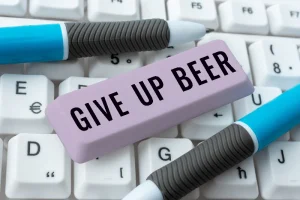
Another example is Taylor, who has been doing a wonderful job taking walks and engaging in healthier eating. Taylor uses an app to watch her intake of calorie limit and does see positive outcomes to her new lifestyle. One night, she craves pizza and wings, orders out, and goes over her calories for the day. If you’re like me, you may have recently watched the Netflix show, Cheer, abstinence violation effect and thought, “I’ve got to start working out more…” But surely that isn’t the first time you’ve told yourself that. From New Year’s resolutions to the start of a new school year in September, we seem to be obsessed with clean, fresh starts where we can completely transform ourselves and our habits.
- Chronic stressors may also overlap between self-efficacy and other areas of intrapersonal determinants, like emotional states, by presenting more adaptational strain on the treatment-seeking client4.
- It is possible to rationalize the fact that if you continue to use, you might not experience the same consequences as before.
- One of the biggest problems with the AVE is that periods of abstinence from opioids increase a person’s risk of overdose and today’s heroin is often tainted with super-potent fentanyl analogs.
- A single lapse in abstinence can result in a full relapse due to a phenomenon known as the abstinence violation effect (AVE).
Navigating the Abstinence Violation Effect in Eating Disorders

For example, ongoing use of the drug methamphetamine may be toxic to brain cells. CP conceptualized the manuscript, conducted literature searches, synthesized the literature, and wrote the first draft of the manuscript. SD assisted with conceptualization of the review, and SD and KW both identified relevant literature for the review and provided critical review, commentary and revision. Set realistic expectations for your recovery journey, understanding that progress may not always be linear. As with all things 12-step, the emphasis on accumulating “time” and community reaction to a lapse varies profoundly from group to group, which makes generalizations somewhat unhelpful. However, broadly speaking, there are clear features of 12-step programs that can contribute to the AVE.
What Can Clinicians Do To Counteract the AVE?
You don’t have to wait until a relapse occurs to seek help if you are concerned that you might be headed for a relapse. There are some common early psychological signs that you might alcoholism treatment be on the way to a relapse. The importance of understanding the stages of relapse and avoiding them cannot be overstated. A person who has abused a substance for a long time is likely to have a higher tolerance for its effects. As a result, when they are abstinent for a period, they will notice their tolerance has declined, making it possible for them to overdose if they start using again at the same level as before. Before any substance use even occurs, clinicians can talk to clients about the AVE and the cognitive distortions that can accompany it.

Abstinence Violation Effect AVE What It Is & Relapse Prevention Strategies

That said, abstinence can also come from a desire to avoid a potential high-risk situation later on. For example, someone might decide to quit smoking to lower their health risks later in life, even if a single cigarette might not be life-threatening in the moment. The AVE can affect anyone, but the impact of it on someone who is managing an addiction can be more significant. That’s why adopting a more realistic, compassionate view of the recovery journey can be helpful, in addition to seeking the appropriate mental health support as needed. Research suggests that online therapy can be effective in treating things like gambling disorders and helping with smoking cessation.
Many researchers define relapse as a process rather than as a discrete event and thus attempt to characterize the factors contributing to relapse3. Ark Behavioral Health offers 100% confidential substance abuse assessment and treatment placement tailored to your individual needs. For those struggling with some form of addiction, this is a very relatable topic. Making a commitment to stop drinking only to find yourself days, weeks, months or years down the road ingesting alcohol. If you can relate with this, I’d like you to think of a time when you deviated from your goal to abstain and what your mind told you the moment you veered off that path. This type of thinking is a prime example of the Abstinence Violation Effect, or AVE.
- This literature – most of which has been conducted in the U.S. – suggests a strong link between abstinence goals and treatment entry.
- The Institute for Research, Education and Training in Addictions (IRETA) is an independent 501(c)3 nonprofit located in Pittsburgh, PA.
- Learning to recognize and manage this effect is crucial in eating disorder recovery to promote self-compassion, resilience, and sustainable progress.
- Rather than labeling oneself as a failure, weak, or a loser, recognizing the effort and progress made before the lapse can provide a more balanced perspective.
Physical Relapse
Twelve-month relapse rates following alcohol or drug cessation attempts can range from 60 to 90 percent, and the AVE can contribute to extended relapses. It’s important to challenge negative beliefs and cognitive distortions that may arise following a relapse. Another possible outcome of a lapse is that the client may manage to abstain and thus continue to go forward in the path of positive change, “prolapse”4.
- Similarly, someone trying to quit smoking might smoke a whole pack of cigarettes after just having one.
- At its most basic, this involves refraining from consuming anything containing alcohol, but a person might also choose to avoid situations that could involve alcohol, like going to nightclubs or bars.

A single lapse does not have to result in a downward spiral of additional lapses and prolonged relapse, and a significant period of relapse does not have to culminate in a lifelong powerlessness over addictive behavior. Having healthy and effective coping strategies in place to anticipate a lapse or relapse can be pivotal, because the likelihood of never again lapsing into an addictive behavior is often quite low. So while the AVE is not a concept that relates only to addiction, strong symptoms of it can be present in substance use disorder situations. Addiction can so often be shrouded in layers of shame, blame, and misunderstanding.
The RP model proposes that at the cessation of a habit, a client feels self-efficacious with regard to the unwanted behaviour and that this perception of self-efficacy stems from learned and practiced skills3. In a prospective study among both men and women being treated for alcohol dependence using the Situational Confidence Questionnaire, higher self-efficacy scores were correlated to a longer interval for relapse to alcohol use8. The relationship between self-efficacy and relapse is possibly bidirectional, meaning that individuals who are more successful report greater self-efficacy and individuals who have lapsed report lower self-efficacy4. Chronic stressors may also overlap between self-efficacy and other areas of intrapersonal determinants, like emotional states, by presenting more adaptational strain on the treatment-seeking client4. One of the biggest problems with the AVE is that periods of abstinence from opioids increase a person’s risk of overdose and today’s heroin is often tainted with super-potent fentanyl analogs.
The negative emotional responses you are experiencing are related to stress, high-risk situations, or inborn anxieties. Because emotional relapses occur so deeply below the surface in your mind, they can be incredibly difficult to recognize. Twelve-step can certainly contribute to extreme and negative reactions to drug or alcohol use. This does not mean that 12-step is an ineffective or counterproductive source of recovery support, but that clinicians should be aware that 12-step participation may make a client’s AVE more pronounced. It can also be particularly vital for mental health professionals to communicate the reality of addiction.
It often takes the form of a binge following a lapse in sobriety from alcohol or drugs, but it can also occur in other contexts. For example, someone who has been on a diet might have a small slip-up and then binge on unhealthy foods. Similarly, someone trying to quit smoking might smoke a whole pack of cigarettes after just having one. In the multifaceted journey of overcoming addiction and living a healthier life, individuals often encounter a psychological phenomenon known as the abstinence violation effect (AVE). Those who drink the most tend to have higher expectations regarding the positive effects of alcohol9. In high-risk situations, the person expects alcohol to help him or her cope with negative emotions or conflict (i.e. when drinking serves as “self-medication”).

Leave a Reply